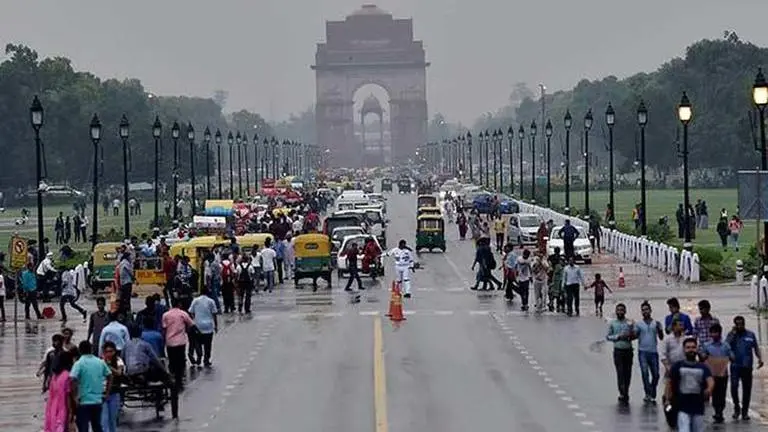Updated 17 October 2020 at 22:28 IST
Slight improvement in Delhi's air quality as wind helps in dispersion of pollutants
Pollution levels reduced slightly in the national capital on Friday with favorable wind speed helping in dispersion of pollutants, according to India Meteorological Department officials.
- India News
- 3 min read

Pollution levels reduced slightly in the national capital on Friday with favourable wind speed helping in dispersion of pollutants, according to India Meteorological Department officials.The city recorded an air quality index (AQI) of 251 at 10 am. The 24-hour average AQI was 315 on Thursday, the worst since February 12 (AQI 320).An AQI between 0 and 50 is considered 'good', 51 and 100 'satisfactory', 101 and 200 'moderate', 201 and 300 'poor', 301 and 400 'very poor', and 401 and 500 'severe'.
A senior scientist at IMD said the dip in pollution levels was likely because of an improvement in the wind speed (up to 10 kilometres per hour).NASA's satellite imagery showed a large cluster of farm fires near Amritsar, Patiala, Tarn Taran, and Firozpur in Punjab, and Ambala and Rajpura in Haryana.
The Ministry of Earth Sciences' Air Quality Early Warning System for Delhi said the wind direction was northwesterly on Friday, which is favourable for transport of pollutants from farm fires.According to the System of Air Quality and Weather Forecasting and Research, the contribution of farm fires to Delhi's PM2.5 concentration was around 6 per cent on Thursday. It was only around one per cent on Wednesday and around 3 per cent on Tuesday, Monday and Sunday.
PM10 levels in Delhi-NCR reduced from 300 microgram per cubic meter (µg/m3) on Thursday evening to 250 µg/m3 at 10 am. PM10 levels below 100 µg/m3 are considered safe in India.PM10 is particulate matter with a diameter of 10 micrometers and is inhalable into the lungs. These particles include dust, pollen and mold spores.
The level of PM2.5 -- finer particles which can even enter the bloodstream -- was 141 µg/m3, down from 151 µg/m3 on Thursday evening. PM2.5 levels up to 60 µg/m3 are considered safe.
Advertisement
With Delhi-NCR bracing for months of poor air quality, experts have warned that high levels of air pollution can aggravate the COVID-19 situation.Severe air pollution in Delhi is a year-round problem, which can be attributed to unfavourable meteorological conditions, farm fires in neighbouring regions and local sources of pollution.
According to an analysis by the Council on Energy, Environment and Water, a Delhi-based think tank, transportation contributes the most -- 18 to 39 per cent -- to Delhi's air pollution.Road dust is the second largest source of air pollution in the city (18 to 38 per cent), followed by industries (2 to 29 per cent), thermal power plants (3 to 11 per cent) and construction (8 per cent).
Advertisement
(IMAGE CREDITS:PTI)
Published By : Press Trust Of India
Published On: 17 October 2020 at 22:28 IST
